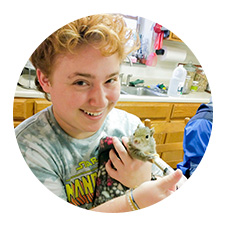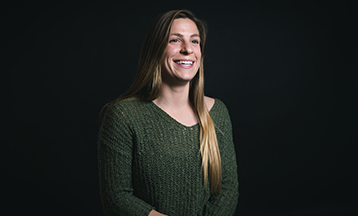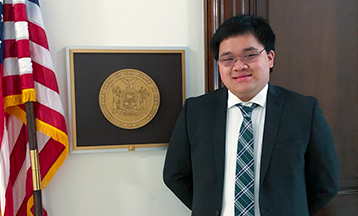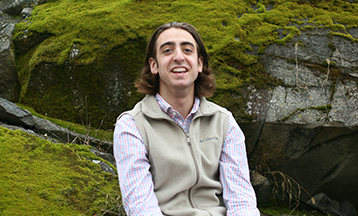-
About
Marist Commencement
Celebrating the Class of 2025
• The graduate ceremony will be held on Friday, May 23.
• The undergraduate ceremony will be held on Saturday, May 24.About
-
Academics
Marist Commencement
Celebrating the Class of 2025
• The graduate ceremony will be held on Friday, May 23.
• The undergraduate ceremony will be held on Saturday, May 24.Academics
-
Admission & Financial Aid
Marist Commencement
Celebrating the Class of 2025
• The graduate ceremony will be held on Friday, May 23.
• The undergraduate ceremony will be held on Saturday, May 24.Admission & Financial Aid
-
Student Life
Marist Commencement
Celebrating the Class of 2025
• The graduate ceremony will be held on Friday, May 23.
• The undergraduate ceremony will be held on Saturday, May 24.Student Life
- Athletics
Background image

Korey Weiss
Middlebury, CTAcademic School
ScienceCampus
New YorkAn all-around animal lover, Korey spent his final semester as an Environmental Science undergraduate at Ravensbeard Wildlife Center in Saugerties, New York, helping injured and orphaned wildlife, including one spunky baby owl named Tyrone.
Korey’s internship involved the full range of care for all types of birds. He learned how they are fed as well as other fascinating facts about their diets; their different stages of maturity; and the challenges they face in their natural environment. He was educated about their enclosures, including the importance of a flight cage. That is where raptors prove they can catch live prey – a necessary step before they are released into the wild again.
“They let me help examine some of the birds, and showed me how they give medicines and treat injuries like broken wings,” said the Middlebury, Conn., resident who has had hedgehogs, frogs, and hamsters as pets. These were experiences Korey knows will make his resume stand out.
And it doesn’t hurt that in 2020, Ravensbeard earned national acclaim when they took in an injured Saw-whet owl rescued from the Rockefeller Tree after its transport to New York City. Working closely with Ravensbeard's knowledgeable rehabbers helped Korey try out wildlife rehabilitation and inspired his desire to explore careers that help protect habitats and species.
Today, he is following the work of the Smithsonian Conservation Biology Institute, where scientists tackle some of today’s most complex conservation challenges. “I went into Marist not knowing a lot and I didn’t know what I wanted to do, so my love for animals is what led me in this direction,” Korey said. “I am grateful for the professors and everyone who helped guide me to where I am today.”



